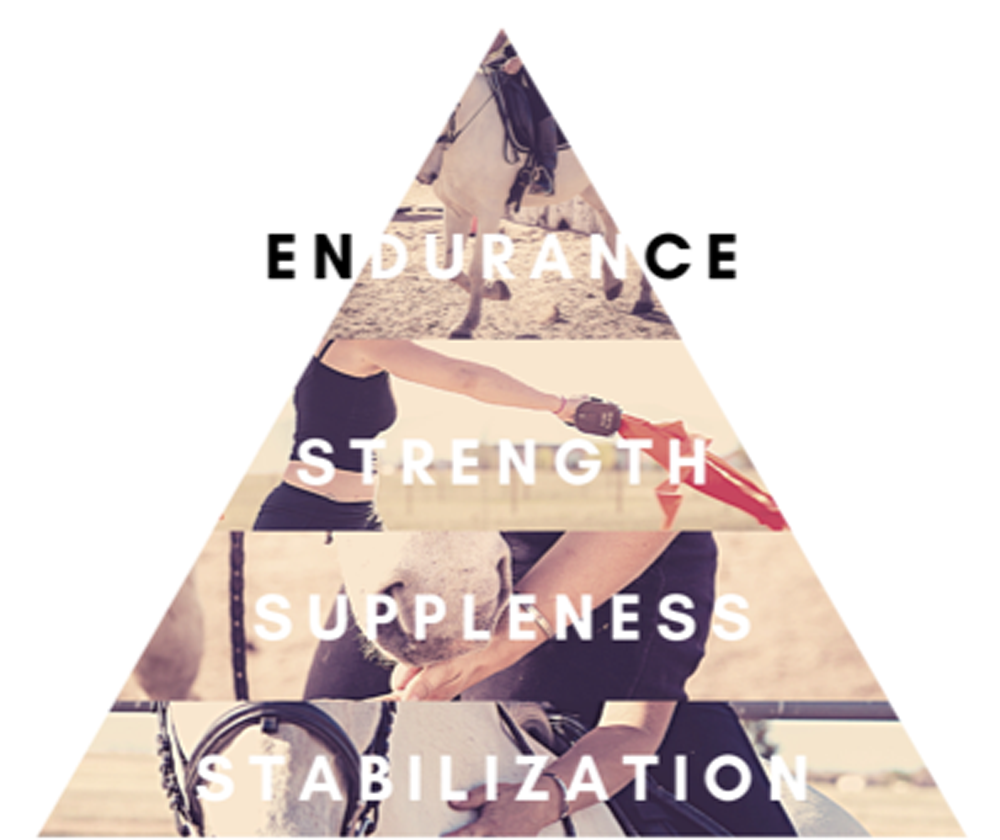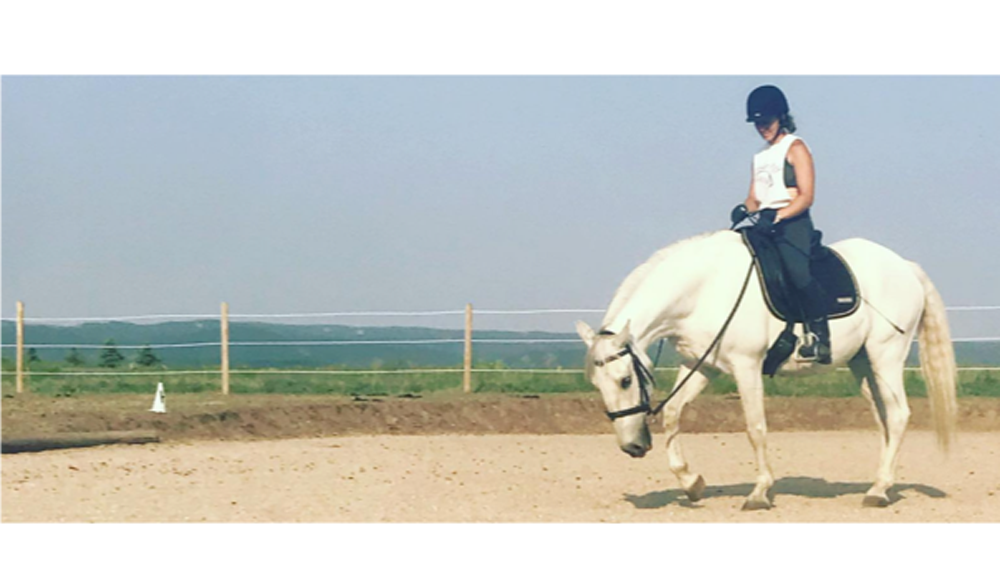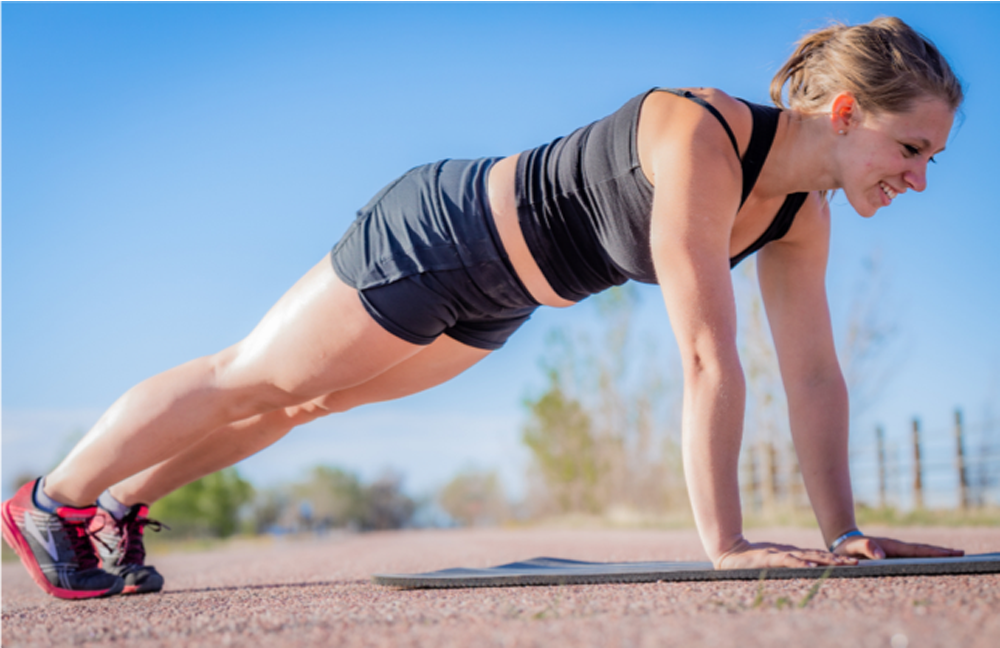You’re familiar with the Dressage Training Scale for horses? Well now it’s time to understand the Equestrian’s Training Scale for riders, to give you the fitness foundations to match your horse.

The Dressage Training Scale was laid down over century ago, and published in its current form and adopted worldwide over 70 years ago, to aid the German cavalry in maintaining the building blocks to train their horses. At the time, however, there was much more that went into making these exemplary riders, and that was their physical fitness in those days.
Times have changed drastically around the world. Horses are no longer going to war and riders are no longer required to maintain the high levels of physical fitness required of the German cavalry. Many riders find themselves sitting behind a desk, diminishing their strength and endurance levels instead of working on their fitness.
Having been around horses since I was born, I was introduced at a young age to a classical dressage trainer and was soon given the chance of a lifetime to ride and purchase a Lipizzaner. This horse went on to teach me the importance of physical fitness and body control as I advanced in my riding career and went on to study exercises science at university and become a personal trainer. I lived in a variety of states around America, getting to know many different trainers who have pushed me to become a better rider. Now I get to share my love for both fitness and horses with others.
“Breath control is a vital
aspect for all riders.”
I have developed the Equestrian’s Training Scale Pyramid in response to the gap in fitness between rider and horse since the original Training Scale was laid down. Modern lifestyles have resulted in a one-sided team between horse and rider, laying bare the need to train the rider to a level of fitness similar to the horse’s. This is where the Equestrian’s Training Scale comes in, implementing the foundational skills of Stabilisation, Suppleness, Strength, and Endurance training.
Why this order when it comes to our fitness training? Let’s look at the pyramid.

STABILISATION
Starting from the bottom of the Training Scale, the element of Stabilisation is established as the foundational piece for the rider in their fitness journey. The principles of body awareness, the centre of gravity, and control of breath are established. So, let’s take a deeper look into these foundational principles and how they can benefit the horse and rider.
Breath control is a vital aspect for all riders, as it affects muscle movement, energy levels, and the maintaining of calmness in stressful situations. With the research done by Irish breathing coach and exponent Patrick McKeown and his team, learning to breathe through the nasal cavity can be done with simple breathing practices. The main importance of breathing this way is the production of nitric oxide that aids in improving blood flow and the delivery of oxygen to the body.
The centre of gravity is a ball of energy that sits in the lower abdominal region to aid in the stability of the human body, whether on the ground or in the saddle. It is also the No.1 way to stay in contact with the horse through your seat. A rider who carries their centre of gravity in the chest and shoulder region will often find themselves unstable and falling forward in the saddle. This will lead to bracing through the rectus femoris (the outer thigh) causing the transitions to be rough and forced, while also creating a blockage in the forward movement of the horse.
The very last principle of stabilisation is body awareness. This is a combination of corrective breathing and finding our centre of gravity all while being aware of how our body moves. Having the understanding that a simple shift in weight or imbalance in the saddle can cause a horse to react (good or bad), will provide the rider with important information in the training of the horse. This creates the goal for the rider of how to move the body to create a positive reaction in the horse. Now, for the riders who ride on their own, this is a highly essential piece of the puzzle to learn the tightness and imbalances in their own body in an attempt to correct them over time. By continuing to strive for balance and stability in their riding, they can begin to create the softness and willingness in the horse.

“Strength is the building of
muscle in the body.”
SUPPLENESS
The second component in the pyramid is Suppleness; this is found through the relaxation of the muscles and joints that allows for the rider to consistently move with the horse. As a rider ages, they begin to lose the range of motion and elasticity in the muscles. This can be caused by long periods of sitting, injuries to the body, and lack of muscle use. A rider can begin to find suppleness through proper use of dynamic and static stretching in their warm-up and cool-down. But this may not always be enough. If the rider has a history of injuries or consistent aches and pains (which many of us do but ignore), it indicates that the smaller muscle groups in that area do not have the ample strength to support the region, thus causing an imbalance in the body and irritation to the horse. This can only highlight the importance of working on your body with a professional to overcome one of the many obstacles in becoming a better rider. This may not always be an option though, so it is important to utilise stretching and yoga practices while learning the proper ways to warm up and cool down the body before and after each ride.

STRENGTH
Strength is the building of muscle in the body. This step was started during Stabilisation but was not introduced due to the likelihood of overpowering vital concepts. By starting with strength, the rider risks creating tension and blockage in their body thus creating it in the horse. Picture this: Imagine you pick up a 10kg weight and hold it over your head – you feel all this tension in your body, your arm starts to shake and wobble, you start gritting your teeth and begin to drop your shoulder.
This same concept begins to happen in the saddle. Think about it. if the inside leg is not trained to hold the horse’s body over to the outside rein, all of a sudden the tension in the body goes up because the leg didn’t have the strength to do so. This can be corrected by utilising the centre of gravity and corrective breathing to create relaxation during the activation of the muscle.
There are a number of different ways to build muscle in the body, but few teach the rider to utilise relaxation in the building of the muscle. The best way to do so is by utilising bodyweight, exercises bands, and lightweight dumbbells while implementing slow and controlled movements through all ranges of motion. When we train strength in implementing all ranges of motion, we allow for the fascia (the connective tissue that runs through our entire body, enveloping organs and giving us form and structure) to become stronger as well, allowing for our bodies to adapt to complex activities such as riding.
ENDURANCE
As a rider Endurance is the key to making it through a ride. Let me ask this: how many lessons have you walked out of completely out of breath and exhausted? Probably a few…
This is where the principle of breathing really comes into play. If the rider can learn to control their breath through the nose, they will be able to push the body to its top performance without falling short in a lesson or in our day-to-day rides. The goal is to strengthen the heart to pump a larger amount of blood each time it beats. Ideally, this increases the size of the left ventricle to hold more blood and allowing it to pump more blood to the heart. Sadly though, no one is born with a large left ventricle, but one can create it through proper training. From the heart, the blood is pumped through the body, carrying oxygen to the muscles and creating energy. The muscles then have to be able to extract the oxygen as it passes.
In conclusion, the four concepts of the Equestrian’s Training Scale can build a solid foundation for any rider in their career. It doesn’t matter if you have been riding your whole life or are just getting started. From finding the Stabilisation and Suppleness in the saddle to having the Strength and the Endurance to maintain it, any rider can build a better foundation. EQ
Andrea Clow is a Colorado-based dressage rider and personal trainer who carries a Bachelor of Exercise Science. You can find out more via The Future Olympian.
YOU MIGHT ALSO LIKE TO READ:
The Thrill of Living Your Dream – Equestrian Life, November 2022

